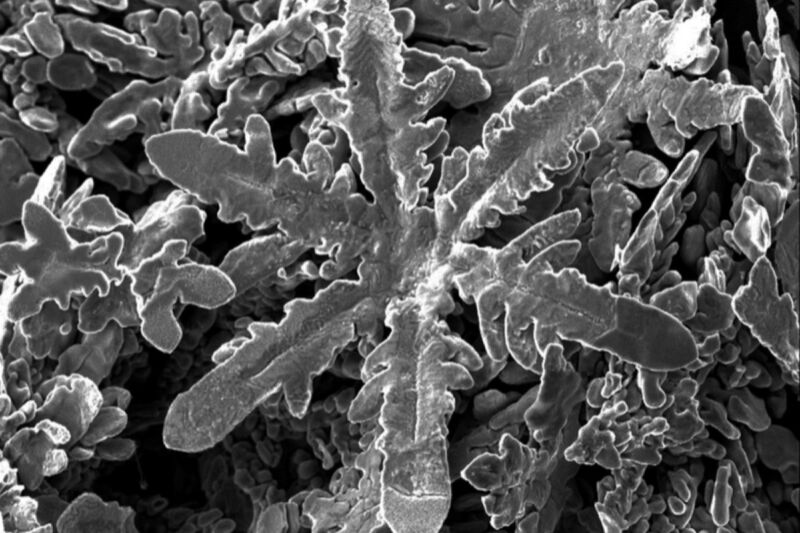
Enlarge / SEM image of a nanoscale snowflake self-assembled from zinc dissolved in a liquid gallium solvent. (credit: Waipapa Taumata Rau/University of Auckland)
There's rarely time to write about every cool science-y story that comes our way. So this year, we're once again running a special Twelve Days of Christmas series of posts, highlighting one science story that fell through the cracks in 2022, each day from December 25 through January 5. Today: Scientists in New Zealand and Australia created tiny metallic snowflakes.
Scientists in New Zealand and Australia were conducting atomic-scale experiments with various metals dissolved in liquid solvent of gallium when they noticed something unusual: different types of metal self-assembled into different shapes of crystals—with zinc creating tiny metallic snowflakes. They described their results in a paper published earlier this month in the journal Science.
“In contrast to top-down approaches to forming nanostructure—by cutting away material—this bottom-up approaches relies on atoms self-assembling,” said co-author Nicola Gaston of University of Auckland. “This is how nature makes nanoparticles, and is both less wasteful and much more precise than top-down methods. There’s also something very cool in creating a metallic snowflake!”
No comments:
Post a Comment